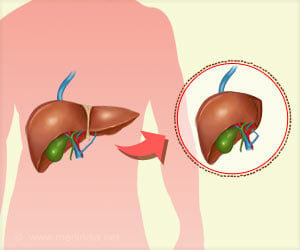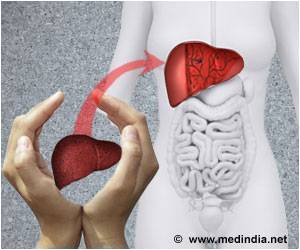The type of patient who is most likely to survive a split liver transplant has been identified by researchers.

‘Waiting children with lower body weights, who were in relatively worse health and whose donor livers spent more time on ice or in transit, had the same potential for a successful transplant with a split liver as they would have with a whole liver. ’





Split liver transplants have been performed for nearly 30 years, according to Mogul, and using the liver's natural structure, a split liver transplant can use a 35 to 40 percent section, making split liver transplant ideal for children whose smaller weights accommodate smaller livers. "An SLT essentially could allow two transplants from a single liver," says Mogul. Using data from the Scientific Registry of Transplant Recipients, Mogul, colleague Dorry Segev, M.D., professor of surgery at the Johns Hopkins University School of Medicine, and their teams examined the medical records of 5,345 pediatric patients who had received their first--either split or whole--liver transplant in the United States between March 2002 and December 2015.
"We already knew from previous studies that variables including the donor's age and cause of death along with the health of the recipient can influence outcomes," says Mogul. "But understanding which of these variables could impact the outcomes from transplanting a split liver versus a whole liver could help guide the increased use of split livers and identify which patients will do best after split or whole liver transplants, thereby being more strategic about matching donor organs with recipients."
Using a statistical analysis that relates variables with an event or outcome, the team looked at the relationship between the type of liver--split or whole--and transplant success after adjusting a number of variables, including many that had previously been reported as influencing organ transplant success. Those variables included organ donor age, cause of death, recipient weight at transplant, underlying disease and how sick the recipient is.
Of the 5,345 pediatric liver recipient records examined, 1,694 or roughly 31 percent received a split liver while 3,651 or roughly 68 percent received a whole liver. Split liver recipients were less likely than whole liver recipients to receive an organ from another pediatric patient, 59 percent versus 83 percent, respectively, and more likely to have received their liver from a donor between ages 18 and 50, 38 percent versus 13 percent, respectively. Split liver recipients were less likely than whole liver recipients to have a donor who suffered from lack of oxygen, but more likely to have a donor with head trauma.
Advertisement
Recipients who weighed less than 10 kilograms had higher rates of transplant failures in general, regardless of whether they received split or whole livers; suggesting that body weight less than 10 kilograms may be a factor for considering split liver transplantation. In contrast, recipients who weighed between 10 and 35 kilograms had an overall lower risk of transplant failure, but the failure rate after receiving a split liver was 1.46 times that of receiving a whole liver, suggesting recipients in this weight range should be considered for whole livers.
Advertisement
"We hope these findings can help guide surgical decision-making and support policy changes that promote the increased use of SLT for selected children," says Mogul. From their study, optimal recipients could include children weighing under 10 kilograms, with a rare disease of the bile ducts known as biliary atresia, acute hepatic necrosis or sudden liver death, autoimmune disease and tumor.
"The better understanding of SLT learned from this study and our most recent research is a critical step toward the goal of significantly increasing access to transplantation," says Segev. "If they wanted to, UNOS--the United Network for Organ Sharing, the entity responsible for U.S. organ allocation policies--could institute policies within one to two years that would have huge impacts on children waiting for liver transplants."
Source-Eurekalert















